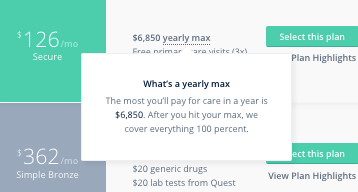Theranos was the bright spot for the healthcare industry. They offered low prices for a comprehensive lab tests, using only a few drops of blood. The new technology would have allowed Theranos to run tests with just a couple of drops of blood in a new handheld device. It would enable users to take their health and future into consideration. It would have created a world where, at will, we would have been able detect diseases or other conditions and take proactive steps to seek the necessary treatments.
Theranos was founded in 2003 by Elizabeth Holmes. Holmes dropped out of Stanford at 19, where she was a sophomore majoring in Chemical Engineer. By 2014, the company has raised over $100 million with investments from DFJ, ATA, Continental Ventures, Larry Ellison which valued Theranos at $9 billion. Holmes still controlled over 50% of the company, giving her a net worth of $4.7 billion and making her the youngest female billionaire.
It is now on its way to be a washout…worth $0.
In October 2015, The Wall Street Journal release an investigative report saying that Theranos did not use its own technology to do the tests. It also said that less than 10% of the tests were done with the “finger-sticks” the handheld devices that made Theranos, Theranos. The rest were done the traditional way of drawing blood from the arm. The report goes on the question the accuracy of Theranos’ lab reports. Other outlets dug deeper and many found the WSJ report to be true.
This is such a shame because the technology could have been, not only disruptive, but good. It would have made the world a better place so much so that while all the investigations were going on, no one wanted to believe it. Holmes was an inspiration and role model to women everywhere. People were rooting for Theranos, even despite all these allegations proved to be true.
The company is now facing criminal charges. Whether or not I believe that they are criminal guilty is not even relevant at this point. It is a company that is trying to do good, but ultimately went about it in a bad way. However I do believe there are going to be major sanctions. The government can use this as an opportunity to punish Theranos as an example. It is also important because of the huge technology vs. government dilemma. With Apple and the FBI notoriously duking it out over privacy concerns, and Microsoft suing the governement for data requests this is becoming a serious issue and the government wants to retain as much control as possible. After all, we all know who wears the pants in the Wall Street vs government relationship. Regulators have proposed banning Theranos, Holmes, and President of Theranos, Sunny Balwani, from the blood-testing business. This has a higher likelihood of happening than the criminal charges, especially since the company is going to be valued at zero.
Another major criticism the company has faced is its corporate governance. The board of directors consists of Riley P. Bechtel (chairman of the board at Bechtel Group), Richard Kovacevich (former Wells Fargo Chairman and CEO), Sam Nunn and Bill Frist (former U.S. Senators), Henry Kissinger (former Secretary of State), William Perry (former Secretary of Defense), William Foege (epidemiologist, former director U.S. CDC), James Mattis (General, USMC, retired) and Gary Roughead (Admiral, USN, retired). These additions all came in 2013 after the previous board members resigned. Channing Robertson (Holmes professor and advisor at Stanford), Robert Shapiro (former CEO of Monsato, Pharmacia) and Pete Thomas (ATA Ventures) left the board, leaving only Holmes, Sunny Balwani (COO and President of Theranos), and former Secretary of State George Schultz. The company then shrunk its board from 12 to 5, adding their outside counsel David Boies. Angel investor Jason Calacanis notes that the lack of a Silicon Valley presence on the board helped destruct this company as VC do proper due diligence and Theranos would not allow investors to see their technology. He says he does not consider the Palo Alto, CA company to be a Silicon Valley company. With a board full of politicians its not hard to see why he would say this, given that there is no “Silicon Valley” culture in this company.
That being said, Theranos has cemented its legacy as a Silicon Valley cautionary tale.








